Athenian Military Might: How Does It Stack Up In The Ancient World?
Ancient warfare has been heavily analyzed in recent years by Classical scholars and has made waves in movies such as 300. However, popular culture and scholarly studies tend to focus primarily on the Spartan military. Part of this Spartan focus comes from the training program for young boys in Ancient Sparta (the agoge), which shaped these boys into fighters. Although Sparta has been seen as the military standard in the Ancient world, the Athenian military also made groundbreaking innovations.
Let’s analyze and compare the different aspects of the Athenian military to determine which area of the Athenian army corps was most effective in Classical warfare.
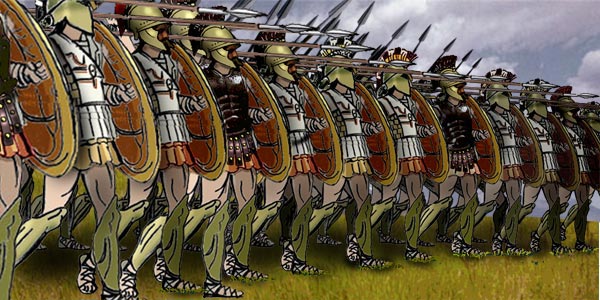
(Photo Credit: Wikimedia Commons)
Ancient Greek Hoplite Phalanx System
The principal component of any Greek military system was the Hoplite Phalanx. Hoplites were armored infantrymen who fought in a dense linear formation, also known as the phalanx. Typically, hoplites were armed with a long spear, a short sword, and a circular bronze shield. They were further protected (if they could afford it) by a bronze helmet, bronze breastplate, greaves for their legs, and ankle guards.
Classical Greek Warfare seemed to have consisted primarily of the clash of hoplite phalanxes from different polis (city-states) in conflict. The basic formation of hoplite phalanx seems to be consistent throughout other Greek polis. Hoplites were organized into regiments (lokhoi) that were often several hundred men strong and fought in ranks typically of eight or more men deep (phalanx). There is greater morale in a deeper formation — hoplites felt safer with more men around then, which in turn improved the overall cohesion of the army.
Greek hoplites were so close to each other in their formation that half the shield of one soldier protected his neighbor on his left side. Typically, the Greek hoplite phalanx advanced towards their enemy at a walk accompanied by rhythmic music. The fighting happened in very close quarters and only ended when one side eventually broke rank. Hoplites retreated only over a short distance to maintain the protective close formation.
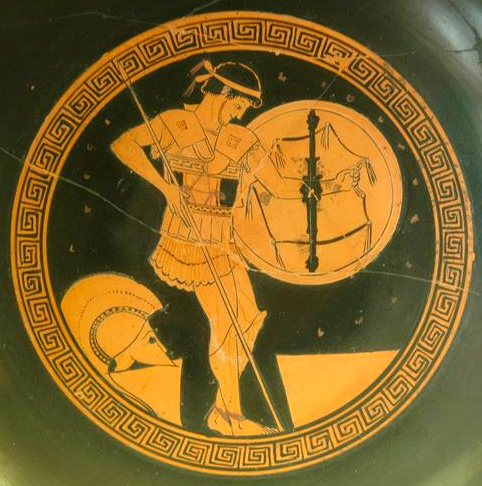
Athens had a system of compulsory military service for 18 to 20-year-olds, but during times of war and conflict, any male citizen up to the age of 60 could be called up for active service. This meant that Athenian hoplites, which was comprised of the largest part of the Athenian military, were not professional soldiers and lacked military experience.
Athenian hoplites were essential in obtaining a Greek victory over the Persians during the Battle of Marathon in 490 BCE. The Greek army, led by the Athenian Polemarch (military commander) Kallimachos or Miltiades fielded about 9000 hoplites. The Persians tactics used at this battle consisted of archers followed by a cavalry charge. The Battle of Marathon was a long battle, but Greek hoplites were able to get the upper hand on the Persian army and eventually pushed them back, breaking Persian lines and confusing the Persian soldiers. As the Persians attempted to retreat, the left and right sides of the Athenian phalanx closed in on the Persians and attacked, inflicting heavy casualties.
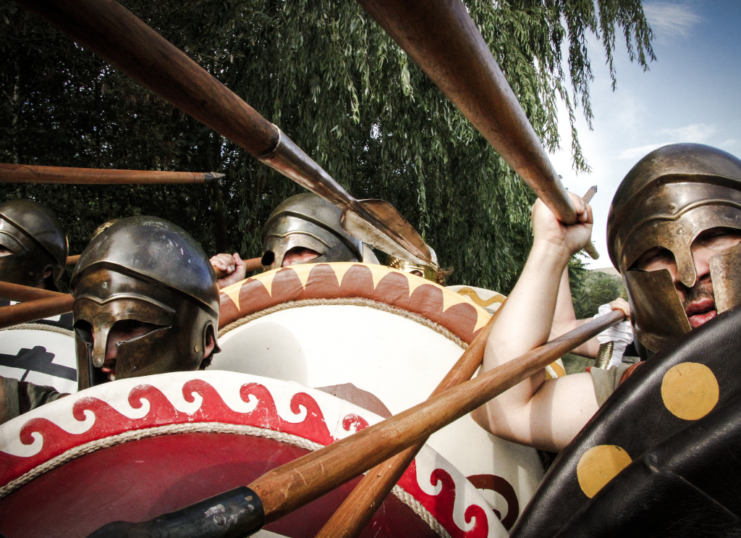
Athenian Ground Military
The Athenian army rapidly expanded throughout the sixth century BCE, which promoted not just the inclusion of more Athenian hoplites, but an increase in men occupying other ground military positions. Throughout the fifth and sixth centuries, the Athenian ground military saw increased use of light infantry to support and be a substitute for Athenian hoplites.
Richer Athenians were able to enroll in the Athenian cavalry (hippeis). The Athenian cavalry was slow to develop because most of the elites who were able to breed horses did so for chariot racing instead of the military. However, by the Persian Wars an Athenian cavalry had been established and was used in various battles during this conflict. The Athenian state carried out an inspection and registered each horse on an annual basis so that the owner could draw a maintenance allowance.
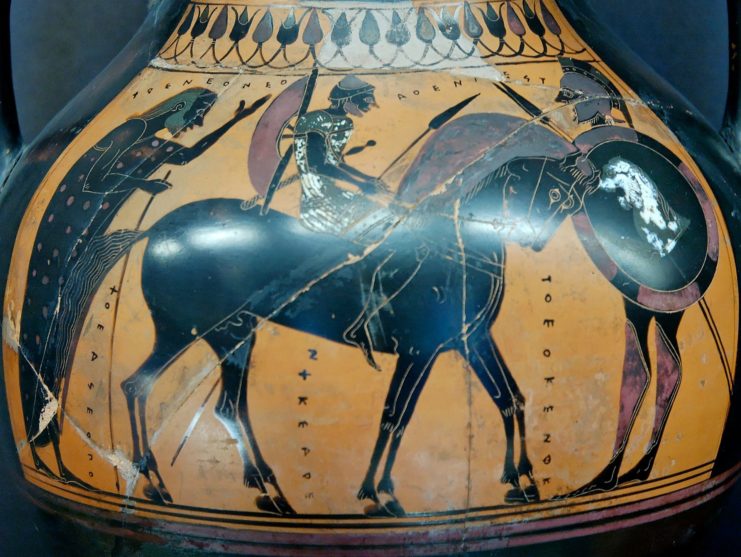
During the Peloponnesian War, Athens possessed the largest cavalry force at 1000 mounted troops. However, cavalry never really emerged as a potent threat during Classical Times, largely due to the rugged Greek terrain. Cavalry units required smooth, level ground and horses needed large quantities of food and water- the landscape of Greece largely lacking both of these necessities.
Other types of infantrymen, including the peltast, were involved in Athenian ground military conflicts. The peltast was typically armed with a javelin and carried a light shield and wore no armor. Because the peltast carried such a light shield and wore no armor, they were much more mobile in the field when compared to hoplites. They were most effective away from the battlefield against heavily armored opponents where they could utilize shoot and evade tactics.
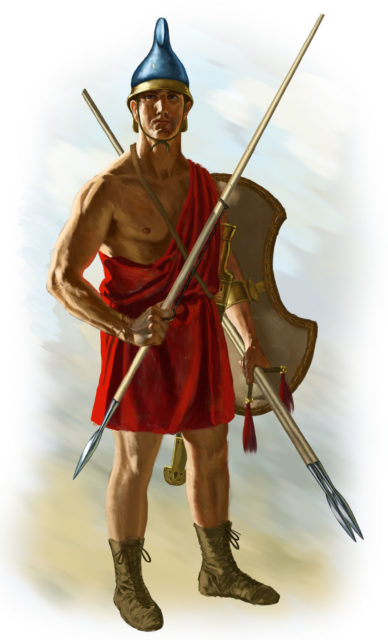
The Athenian peltast was especially effective in the Battle of Sphacteria in 425 BCE against the Spartans. At least 800 Athenian peltasts were present at this battle. During this battle, the Athenians also had about 800 hoplites fighting on the ground, it was the use of javelins from the peltasts that forced the opposing Spartan troops to surrender.
Another light infantry innovation the Athenian ground military made was the implementation of an archer corps which was created in the late 480s BCE. These archers would be involved in both land and sea battles in the Fifth and Sixth Century BCE. The Greek historian Thucydides wrote that at the beginning of the Peloponnesian War (431 BCE), Athens had 1600 archers in their military as well as an unknown number of horse archers.
Athenian Navy
The jewel of the Athenian armed forces was their navy. In the sixth century BCE, the Athenian fleet grew from about 60 ships to around 400 ships. The Athenian Navy was primarily made up of ancient ships called triremes. These were wooden warships that carried about 170 rowers who operated three banks of oars. Triremes were about 100 to 120 feet long and about 20 feet wide. At its peak, the Athenian Navy employed nearly 80,000 men to row all 400 ships. These rowers were primarily poor Athenians, and employment in the navy offered these men a wage.
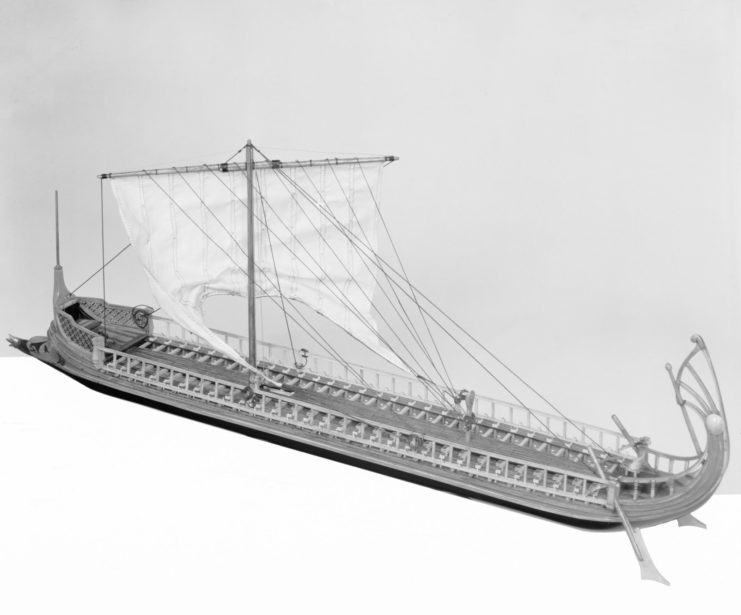
The Athenian Navy was virtually non-existent until slightly before the Second Persian Invasion. Athenian politician Themistocles was influential in the development of the Athenian naval fleet. Themistocles, who predicted a second Persian invasion, felt that the Athenians could exploit the weakest part of the Persian military, their navy. In 483 BCE, Themistocles convinced Athenians to build a fleet of 200 triremes, all of which would prove essential in defeating the Persian fleet.
The Battle of Salamis in 480 BCE proved the importance and the might of the Athenian Navy. During this battle, the Greek fleet under the leadership of Themistocles defeated a much larger Persian naval fleet. By 480, the Persian king Xerxes was in control of a navy of about 800 galleys (another type of ancient ship that was similar to a trireme). In comparison, the Greeks possessed a fleet of only about 370 triremes at this battle. Themistocles lured the Persian fleet into the narrow waters of the strait at Salamis, where the huge Persian ships had a difficult time maneuvering. This strategic thinking allowed the Greek triremes to attack the Persian fleet by ramming into their boats, sinking many Persian vessels. In total, the Greeks sank about 300 Persian ships while they only lost about 40 of their own.
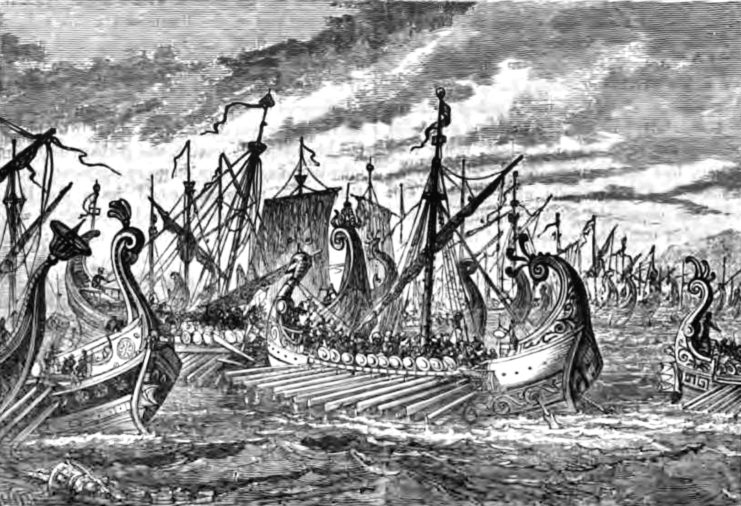
Typically, the strategy the Athenian military utilized was one of ramming. During naval battles, a trireme captain would frequently use the front of the ship to ram into smaller boats to sink them. Commanders would also arrange their fleets in a long front, so it was difficult for any enemy to pass behind this wall of Athenian ships. Triremes often carried Athenian hoplites and archers to distant locations. Sometimes a trireme would move next to an enemy ship so an Athenian boarding party comprised of hoplites could board and raid and capture the opposing vessel.
However, triremes were not without their faults. There were no sleeping areas for the crew, so the ships were required to be dry-docked each night. Even if there were sleeping quarters on the ship, triremes still needed to be pulled from the water each night because they would quickly become waterlogged if they were left in the sea.
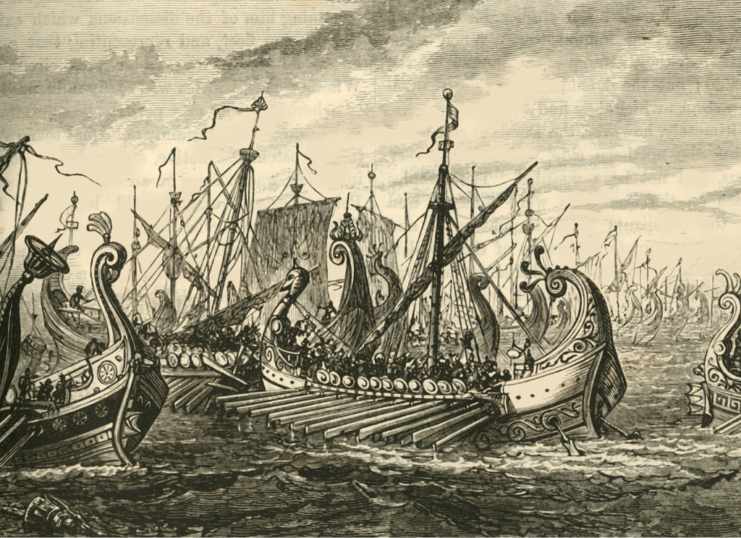
(Photo Credit: Print Collector/ Getty Images)
The Athenian Navy could not stay on top of the ancient world forever. The Athenian naval fleet was destroyed during the Peloponnesian War. During the Battle of Aegospotami in 405 BCE, the Spartan naval fleet under the command of Lysander destroyed the Athenian Navy, effectively ending both the Peloponnesian War and Athenian sea supremacy.
The Athenian military couldn’t stay on top of the Ancient World forever. They were no longer the strongest Greek polis by the end of the Peloponnesian War. However, though they are most often thought of as a cultural ancient city they also were also a very innovative military force.
Post a Comment
0 Comments